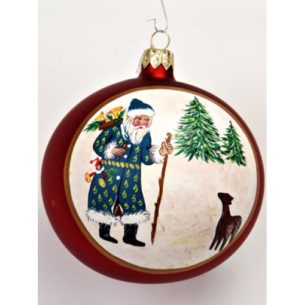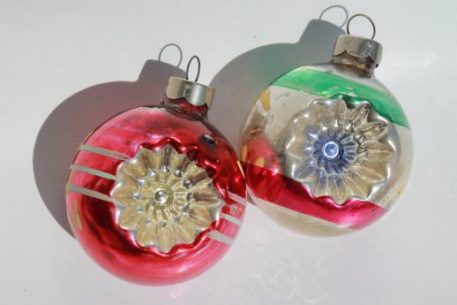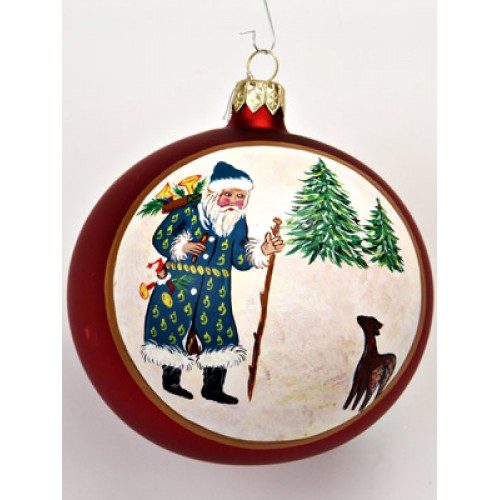 Many beloved Christmas movies hinge their dramatic impact on the idea of Christmas being jeopardised in some way, only to be saved at the last minute by a miracle. Whether it’s the threat of the Grinch stealing away everyone’s gifts or the possibility of Christmas being cancelled due to a great storm, the idea of our most beloved family celebration being taken away resonates deeply. For the majority of Western Christians—and many non-Christians as well—Christmas is more than a date on the calendar or a day off work; it’s an immutable fact of life. It’s the annual anchor that keeps us in touch with our friends, our families, and ourselves.
Many beloved Christmas movies hinge their dramatic impact on the idea of Christmas being jeopardised in some way, only to be saved at the last minute by a miracle. Whether it’s the threat of the Grinch stealing away everyone’s gifts or the possibility of Christmas being cancelled due to a great storm, the idea of our most beloved family celebration being taken away resonates deeply. For the majority of Western Christians—and many non-Christians as well—Christmas is more than a date on the calendar or a day off work; it’s an immutable fact of life. It’s the annual anchor that keeps us in touch with our friends, our families, and ourselves.
You may therefore be surprised to learn that, in the not-too-distant past, Christmas actually was in danger of vanishing. Not due to any singular calamity, but rather a slow erosion of Medieval traditions, spurred on in part by friction between various Christian sects (and later the pressures of industrialisation). By the beginning of the 19th century, Christmas had become something of a minor event in many areas. As the BBC reported in its History of Christmas series, few businesses even considered Christmas Day a holiday at this juncture. Certainly, none of them were selling Christmas cards, trees, or ornaments; these traditions were as yet unheard of.
Where our modern concept of Christmas is concerned, it turns out that we owe a great debt of gratitude to Queen Victoria—and not merely for her role as an iconic monarch. It was her actions as a devoted wife and mother that truly revived a dwindling tradition and replaced the (sometimes riotous) medieval feast with a love of home and hearth.
Glass Ornaments: From The German Forest To The Victorian Parlour
After marrying the German-born Prince Albert, Queen Victoria decided to honour his heritage by learning about German Christmas traditions and celebrating them with her children. When the 1848 edition of the Illustrated London News published a drawing of the royal family gathered around a decorated Christmas tree, public curiosity was therefore instantly piqued. The scene of the happy family and their ornate fir tree bedecked with candles, sweets, fruit, glass ornaments, and little gifts was so charming that, before long, every household in Britain was seeking to emulate the previously little-known tradition.
During this same era, in Prince Albert’s native Germany, many ‘cottage industry’ glassworks were facing a potential crisis. The epicentre of this unrest was the village of Lauscha, which is located about 60 miles north of Nuernberg, in the province of Thueringen. Ever since the 1590’s, when Huguenot glass blowers (originally residents of the German province of Schwaben) were forced to flee their homeland due to religious persecution, Nuernberg’s plentiful forests had been providing fuel for a thriving glass industry. From the woodland cottages of Lauscha came the windows, drinking glasses, and eventually the decorative bead glass beloved by wealthy Europeans.
Up until the 1840’s, Lauscha’s place as the dominant centre of bead manufacturing in Europe seemed absolutely secure. Alas, with the industrial era came rapidly improving manufacturing processes and the threat of competition from abroad: Glass blowers in Bohemia invented a cheaper and more efficient bead-making process and, seemingly overnight, Lauscha’s revenue dried up. The local glassmakers, almost all of them single family operations, were now faced with ruin and the threat of deep poverty.
Unwilling to give up even though they could not replicate the bead-making techniques of their Czech counterparts, German glass blowers began experimenting. They took the large blown glass balls they called ‘kugeln’ (formerly an eccentric sideline) and started to add silver to them, creating a more lustrous appearance.
 At the same time Queen Victoria’s family was reviving historic German traditions, German families started pulling together to create a new one through this process. Fathers usually blew the glass while mothers took care of the intricate task of silvering. Older children were then brought on board to help paint and finish these beautiful new ‘kugeln.’ Day and night families laboured together, often working up to 16 hours at time, six days per week in order to produce between 300-600 glass balls. Fortunately, their hard work was to pay off: In 1848, the same year the British Empire was introduced to Queen Victoria’s Germanic family Christmas, the first written records of festive glass ornaments begin to appear.
At the same time Queen Victoria’s family was reviving historic German traditions, German families started pulling together to create a new one through this process. Fathers usually blew the glass while mothers took care of the intricate task of silvering. Older children were then brought on board to help paint and finish these beautiful new ‘kugeln.’ Day and night families laboured together, often working up to 16 hours at time, six days per week in order to produce between 300-600 glass balls. Fortunately, their hard work was to pay off: In 1848, the same year the British Empire was introduced to Queen Victoria’s Germanic family Christmas, the first written records of festive glass ornaments begin to appear.
Demand for ‘kugeln’ quickly grew to the point where working freehand (without the use of moulds) became impractical, so German glass artists began to employ mould designs to increase production. The first of these moulded glass ornaments were simple pine cones, but as the market grew, so too did the diversity of glass Christmas ornaments. By the 1880s, when buyers from American stores (notably Woolworth) started coming to Lauscha to purchase glass Christmas ornaments, there were literally hundreds of different designs available. For the residents of Lauscha, ‘kulgen,’ hard work, and the spirit of family togetherness had truly coalesced into a Christmas miracle. Their trade was to become a cherished part of history and their futures were therefore secure.
Though the centre of glass production has since shifted to other areas of Germany (and spread throughout Europe), today most European glass decorations are still crafted and painted completely by hand. This remains the secret behind their magical, fascinating intricacy; for all the wonders of modern technology, no machine on Earth can replicate the detail provided by a caring human hand.
Whether it’s a beautiful bird representing one of God’s messengers of peace or a rose symbolising the love of Christ for all mankind, glass Christmas ornaments have transcended the realm of folk craft and become an art in their own right. They are also an enduring reminder of Christmas and what it represents; while the paper ornaments, candles, and fruit that bedecked Victorian Christmas trees have long since vanished, many of the first glass Christmas ornaments remain with us today. Out of all of the types of ornaments available to us, they are peerless in their permanence, brilliance, and adherence to a proud family tradition.

